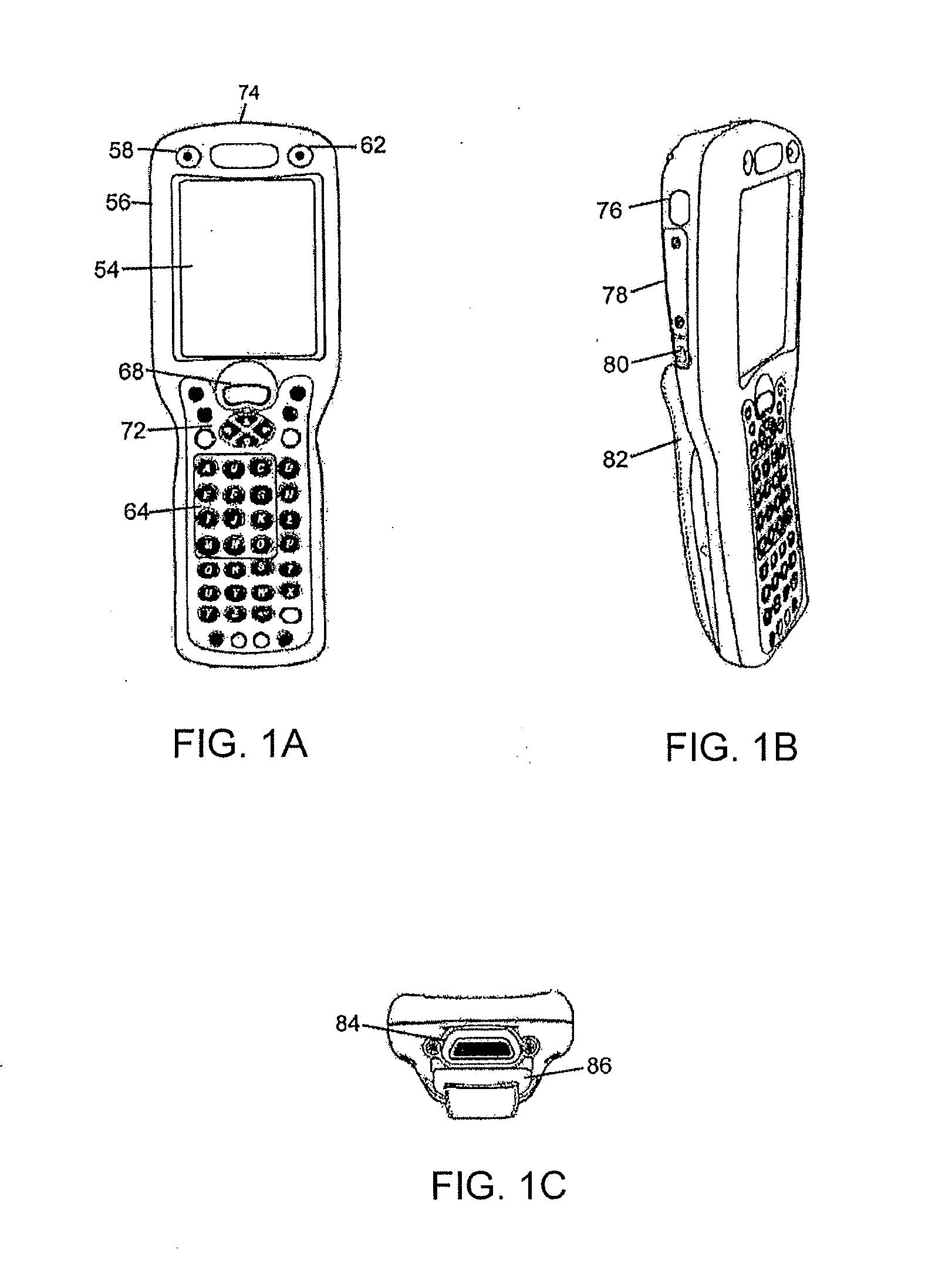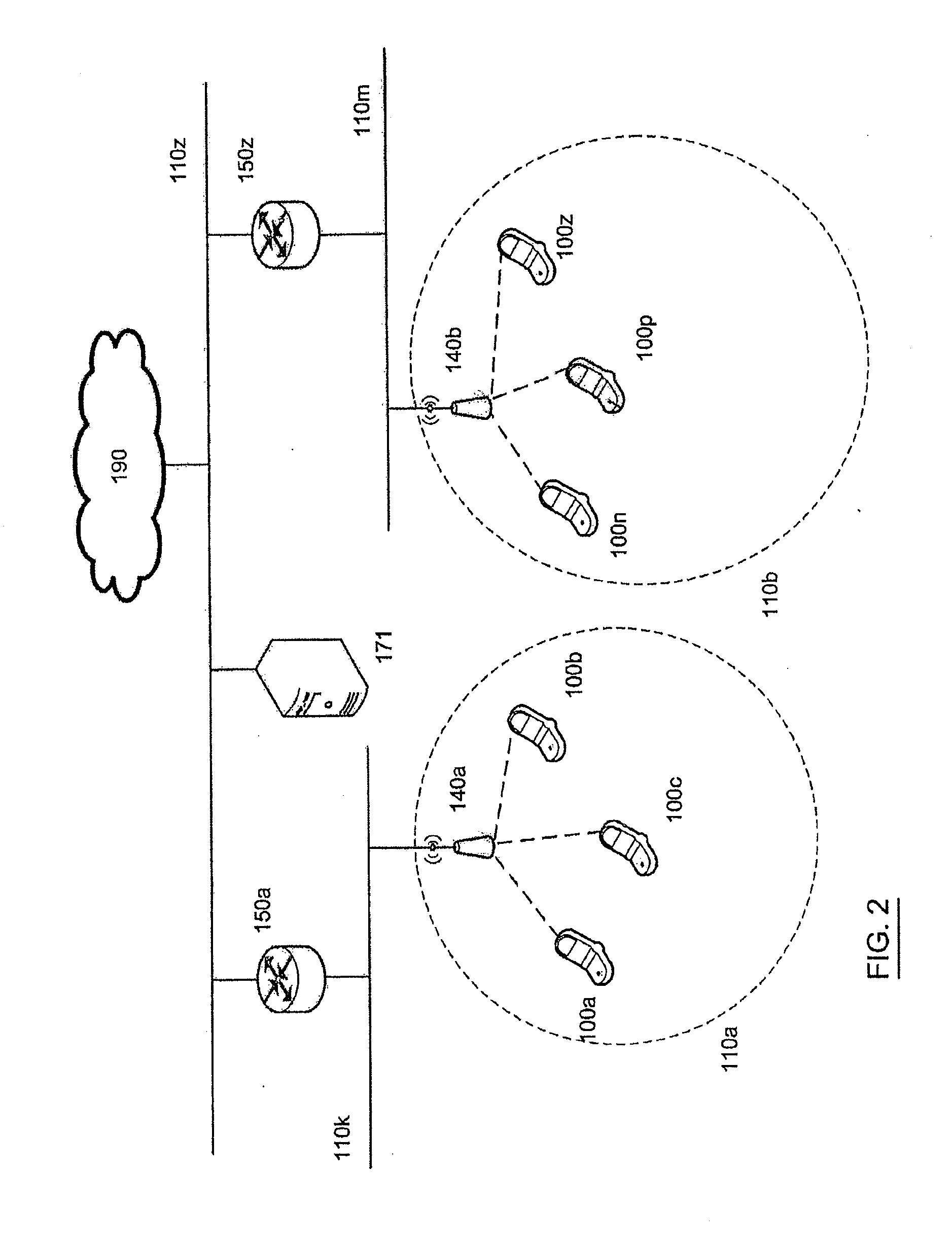RFID devices using metamaterial antennas
a technology of metamaterials and antennas, applied in the field of radio frequency identification devices, can solve the problems of reducing performance, reducing and being susceptible to environments, so as to increase the bandwidth of the antenna system
- Summary
- Abstract
- Description
- Claims
- Application Information
AI Technical Summary
Benefits of technology
Problems solved by technology
Method used
Image
Examples
first embodiment
Antenna to Generate Additional Resonance Frequencies
[0043]FIG. 4B illustrates an example of another MTM antenna 420 with increased bandwidth. FIG. 4B, in one embodiment, may include features similar to the MTM antenna of FIG. 4A, such as conductive feed line 416 coupled to conductive cell patch 402, via 404, dielectric substrate 408, and feed pad 414. Additionally, the MTM antenna of FIG. 4B may include a stripline portion 425 extending from a portion 430 of the conductive feed line 416. The length of the stripline portion 425 may be variable so that the resonant frequency generated by the addition of the stripline portion 425 is in addition to resonant frequencies in the circuit of FIG. 4A (i.e., without the stripline portion 425). By varying how long the stripline portion 425 is, a user can vary the insertion losses and bandwidth of an antenna, such as an RFID antenna.
[0044]FIG. 5 illustrates a graph of the insertion / return loss (S11) for the antenna of FIG. 4B. As illustrated, wi...
second embodiment
Antenna to Generate Additional Resonance Frequencies
[0051]FIG. 6 illustrates an antenna system 600 generating multiple resonant frequencies according to one embodiment. Antenna system 600 may include a plurality of antennas. For example, the antenna system 600 of FIG. 6 includes three monopole antennas 604, 606, and 608. The monopole antennas 604, 606, and 608 are each fed at a common feed point 614. Monopole 604 extends along a plane that is perpendicular to the printed circuit board 615. Monopole 604 has a first length and is configured to generate a first resonant frequency for the antenna system 600. Monopole 604 is connected to feed point 614 via strip portion 620.
[0052]Monopole 606 extends along a plane that is parallel to but separate from a plane defined by the printed circuit board 615. Monopole 606 has a second length and is configured to generate a second resonant frequency for the antenna system 600. It is noted that monopole 606 has a first section 611 and a second port...
PUM
 Login to View More
Login to View More Abstract
Description
Claims
Application Information
 Login to View More
Login to View More - R&D
- Intellectual Property
- Life Sciences
- Materials
- Tech Scout
- Unparalleled Data Quality
- Higher Quality Content
- 60% Fewer Hallucinations
Browse by: Latest US Patents, China's latest patents, Technical Efficacy Thesaurus, Application Domain, Technology Topic, Popular Technical Reports.
© 2025 PatSnap. All rights reserved.Legal|Privacy policy|Modern Slavery Act Transparency Statement|Sitemap|About US| Contact US: help@patsnap.com



